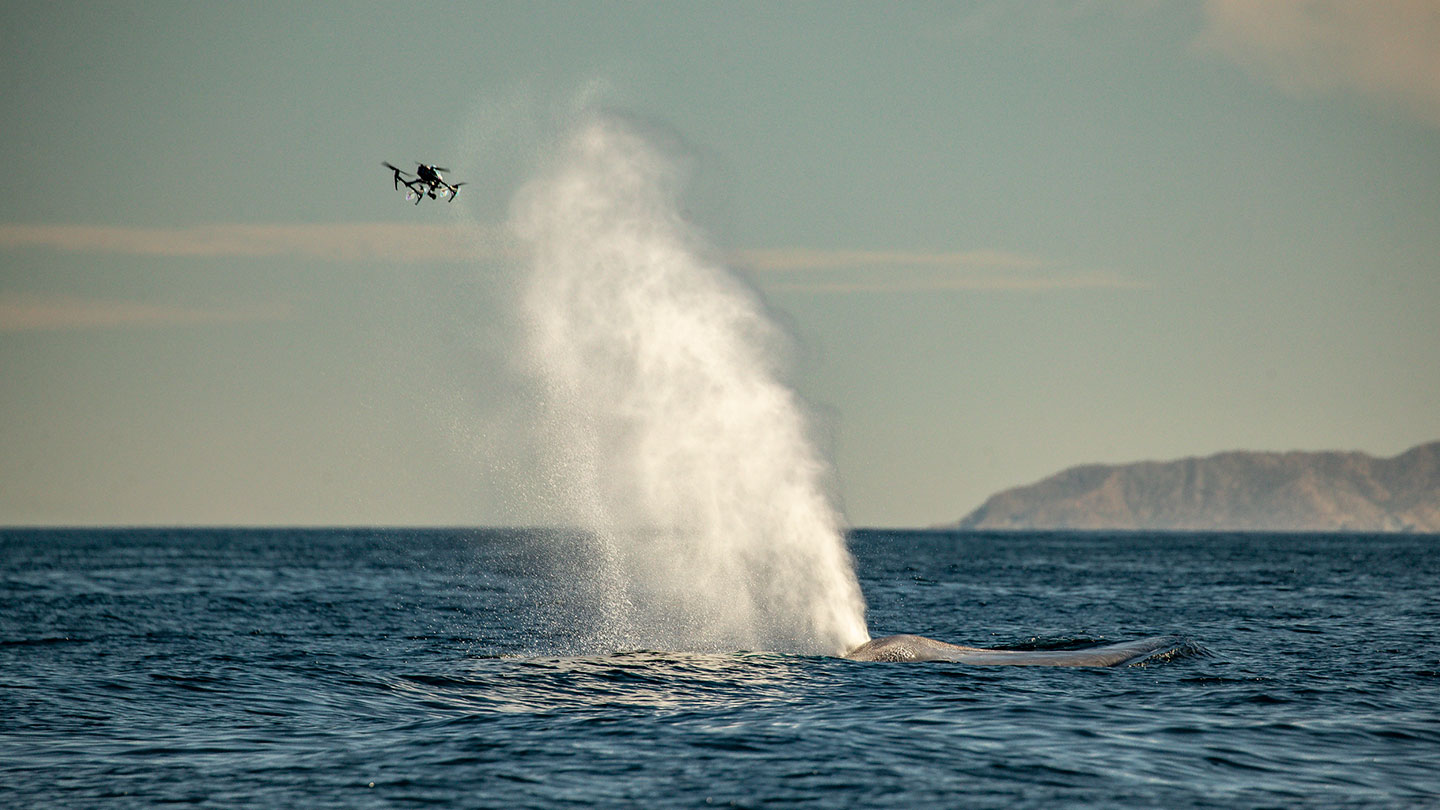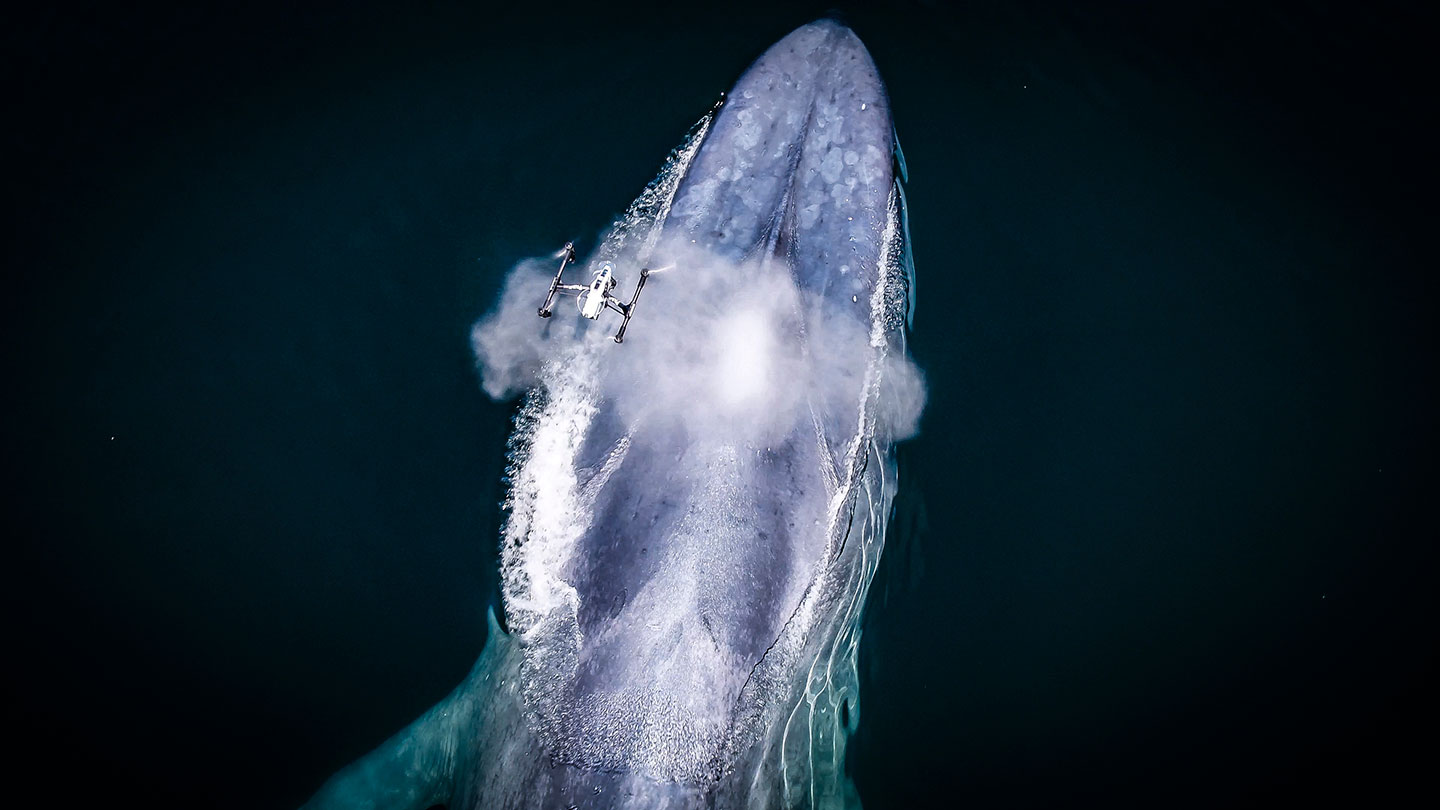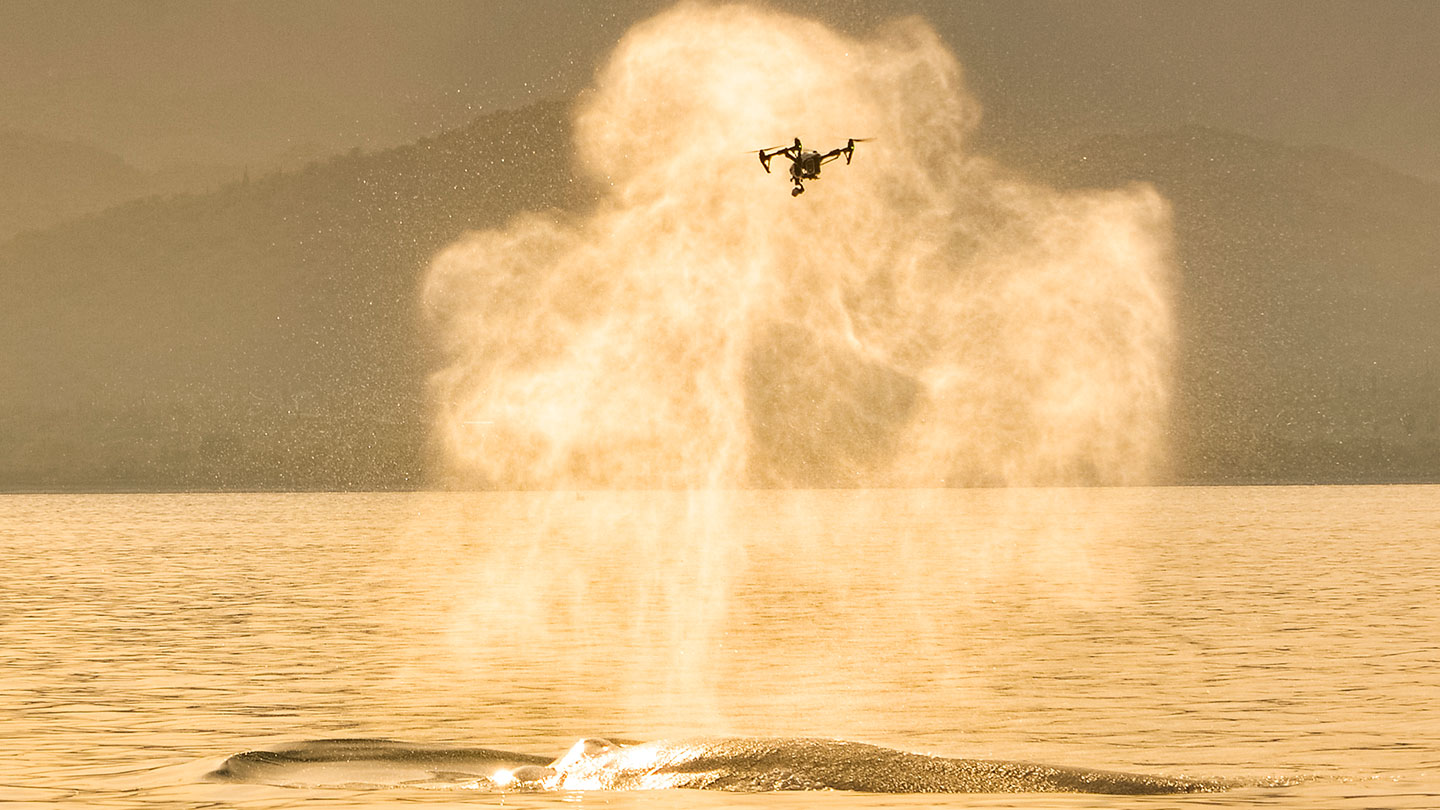These flying robots protect endangered wildlife
Drones collect snot from whales, snap photos of rare monkeys, count penguins and more
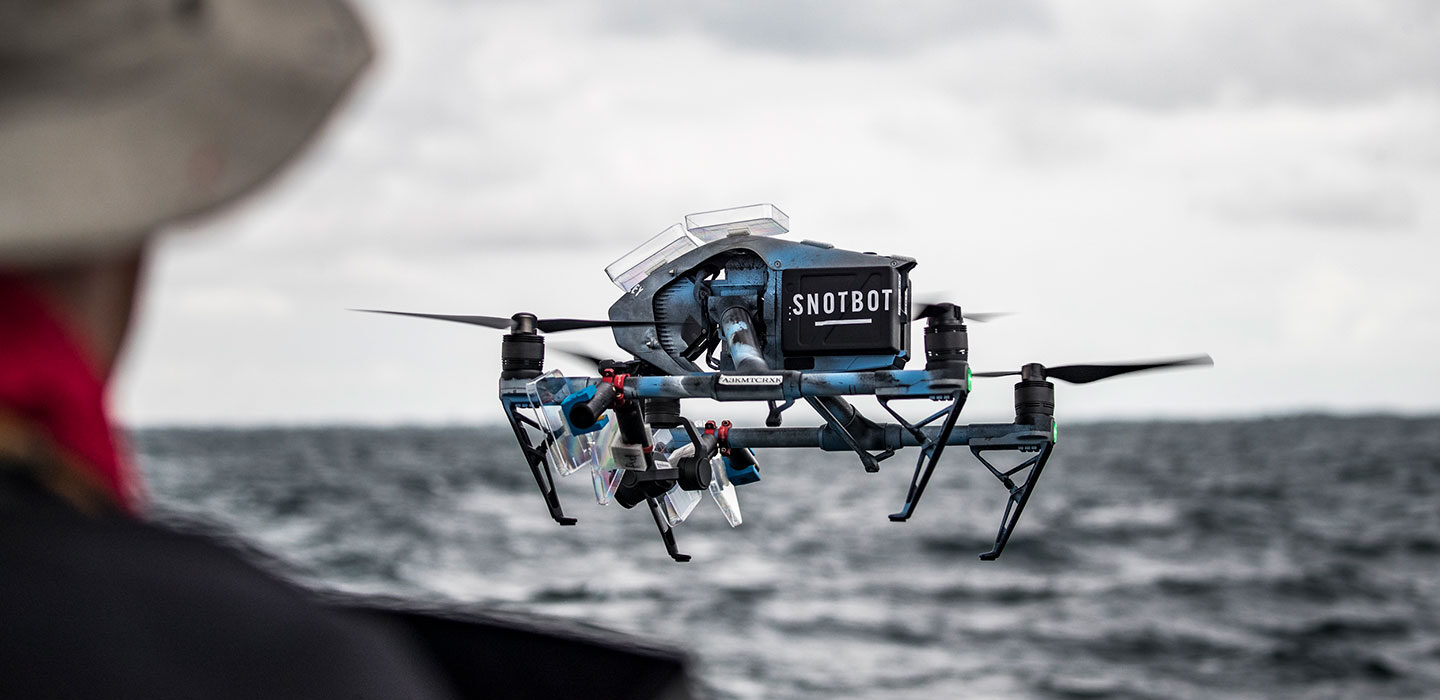
Got whale boogers? SnotBot the drone does! Scientists fly it through plumes of whale blow to collect samples. The drone also takes photos and videos. Around the world, researchers are using drones to help study and protect animal populations.
Christian Miller, Ocean Alliance Inc.
SnotBot is on a mission. The toaster-sized drone flies over the open ocean, directly above a rare sei whale. On a boat nearby, Andy Rogan beams with joy. He’s been studying whales his entire career, but had never seen this species.
Rogan is a marine biologist with Ocean Alliance, an organization based in Gloucester, Mass. Right now, though, he’s on an expedition near the Azores — islands in the middle of the Atlantic Ocean.
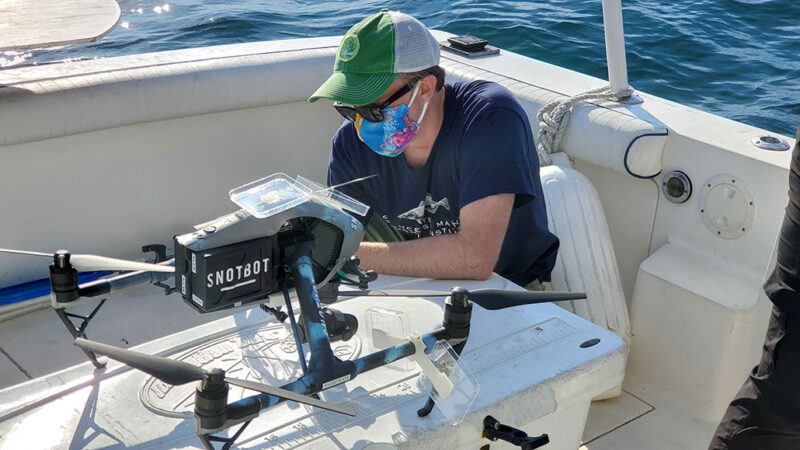
All of a sudden, whuffff! The giant whale sends up a cloud of snot. It completely soaks the hovering drone.
Rogan cheers. That’s exactly what his team hoped would happen. SnotBot has a petri dish on board. Now, that dish contains sei whale snot, also known as whale blow. “Sometimes it smells sort of fishy,” says Rogan. “[It] has the consistency of water. It’s more like seawater than slime.” So maybe it’s not as gross as human boogers. But it does contain mucus. And the DNA in that mucus can give scientists important information about whales.
SnotBot also carries a camera. On some flights, operators remove the petri dish. Then they send the bot out to take pictures and videos of whales from above. Explains Rogan, “Drones have allowed us to get a clearer understanding of how whales swim, how they behave, how they interact and how many travel in a group.”
He and SnotBot aren’t alone. Around the world, people who work to better understand and protect wildlife are using drones to help the cause. Some are counting seabirds in colonies at the Falkland Islands in the remote South Atlantic. Others are tracking and counting endangered muriquis monkeys in Brazil and orangutans in Sumatra (an island in Indonesia). And in Africa, drones and camera traps are keeping an eye out for poachers who might harm rhinos and other protected animals.
SnotBot flies through the blow of blue whales in the Gulf of California off the coast of Mexico. The mucus in whale blow contains DNA. Researchers use these DNA samples to better track and understand whale populations.
Flying cameras
Wildlife researchers often trek through jungles and underbrush to find animals. They may peer at whales from boats or fly in helicopters to view animals from above. Such flights are very expensive and sometimes dangerous. Plus, their noise may scare animals. And helicopters can’t fly very far out over the ocean because there’s nowhere to land or refuel.
Back in 2011, Lian Pin Koh and Serge Wich wondered if there might be an easier way to get similar types of data. “We both realized that counting animals is such an enormous effort,” says Wich. “We thought, ‘What if you fly over them with a flying camera?’”
Wich is an ecologist and conservation expert at Liverpool John Moores University in England. Koh is an ecologist at the National University of Singapore. Together, they cobbled together a drone from a remote-control model airplane, hacked camera equipment and sponges. The sponges absorbed the drone’s vibrations, explains Wich. That way the images wouldn’t be too blurry. At the time, it was possible to buy drones, but they cost tens of thousands of dollars. This do-it-yourself version cost less than $2,000. Wich and Koh call it a conservation drone.
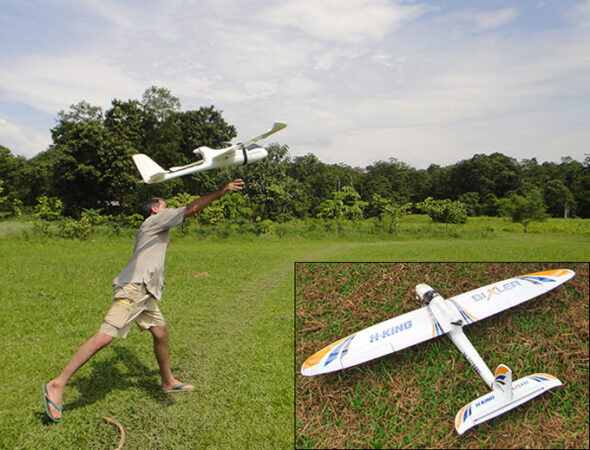
And it did the trick. On a test flight, the drone captured an image of an orangutan in its nest at the top of a very tall tree. “That was a very exciting moment,” says Wich. The pair realized this was just the beginning of a whole new way of doing conservation work. They also started the group Conservationdrones.org to share what they were learning with other researchers across the globe.
Finding hidden monkeys
Fabiano Melo is one of those researchers at Federal University of Viçosa in Brazil. As an ecologist, he studies the Northern muriqui. This rare, large monkey inhabits the tropical forests of Brazil. “They live literally in peace,” says Melo. “Nobody fights about females or about food. They just eat flowers and leaves.” Yet these monkeys are critically endangered. Only some 1,000 remain in the wild.
Forest fires are their biggest threat. Most often, people set these fires to clear land for farming. Those fires also destroy the animals’ habitat. Melo must know where the muriquis are to make sure people aren’t allowed to set fires near them.
But finding rare monkeys in a vast jungle wasn’t easy — until he learned about drones. Melo piloted one for the first time in 2017. Now, he says, his colleagues call him “the master of drones.”
His latest drone, nicknamed “Dronequi,” has a hybrid camera. It can take regular photos and videos. Or it can use a thermal sensor to detect heat. Getting this sensor felt like a miracle to Melo. It could detect muriqui body heat even when the animals were hidden among the thick leaves and branches in tree canopies at the top of the forest.
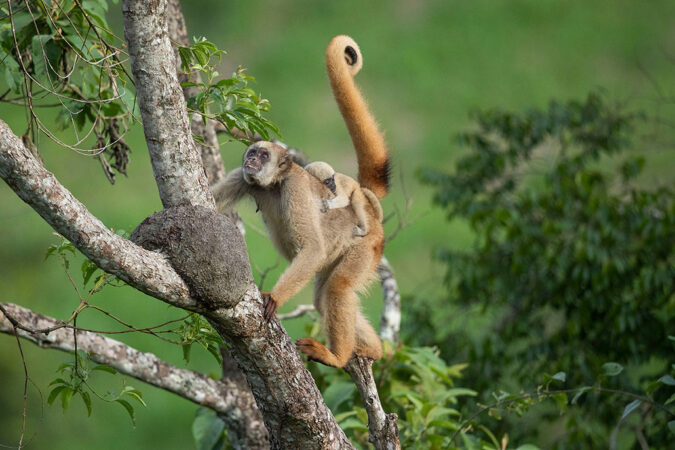
During 2020, Melo and his team flew Dronequi over five different sites in Brazil. They discovered a group of 15 muriquis that no one had known existed. “When we find a new group, I go crazy,” he says. “I scream a lot. I have tears in my eyes.” Finding a new group means that there are more muriquis in the wild. Now Melo’s team can work with the government and private landowners to protect where these monkeys live. Or, if necessary, the team can move the animals to a site that’s safer or closer to others of their kind.
Counting penguins
Madeline Hayes is a drone pilot and graduate student at Boston University in Massachusetts. She remembers a time in college when she felt really discouraged. There seemed to be too many environmental issues plaguing the planet. When she discovered drone technology, though, she gained new energy. “You can get so much more data,” she says. And all those data mean that “you can explore brand new questions no one has been able to explore before.” Hayes has flown drones to investigate water quality in Morehead City Harbor in Beaufort, N.C., and invasive aquatic plants in the Lake Champlain Basin in Vermont.
For one recent project, though, she didn’t get to pilot the drones. A different team of researchers had already captured drone images from the Falkland Islands (also known as the Malvinas Islands). They’re just east of the southern tip of South America. The images showed colonies of thousands of black-browed albatrosses and southern rockhopper penguins. The two seabirds nest together.
A few decades ago, black-browed albatrosses were listed as endangered. Thanks to conservation efforts, their numbers have been growing. But southern rockhopper penguin populations are falling. That’s mostly because climate change and overfishing have made it harder for them to find food. They are considered vulnerable, which is slightly less worrying than the “endangered” label. But even vulnerable species could go extinct if nothing is done to help them. Experts need to keep an eye on both types of birds.
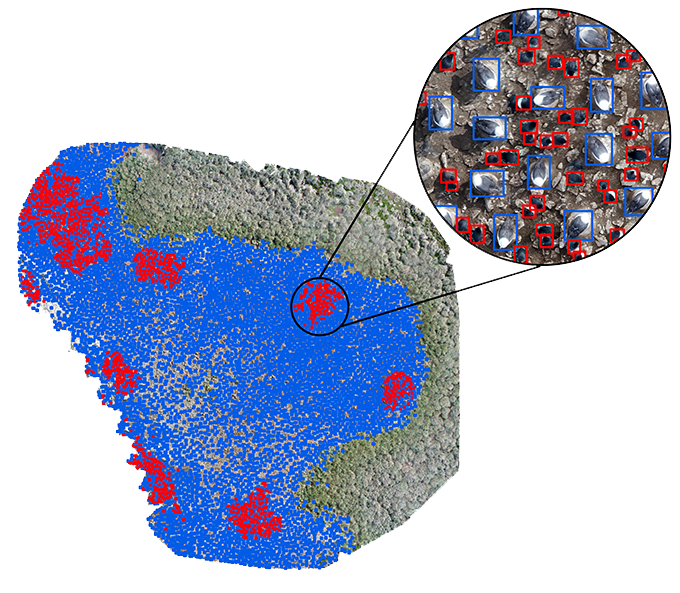
Before researchers had drones, they had to go to the islands and count birds manually. This was expensive and time-consuming. They could only afford to spend the time and money to do a full count once every five to 10 years. And a lot could happen to the birds between counts.
Hayes, though, came up with a way to count birds automatically from drone images. She used machine learning. This is an artificial intelligence, or AI technique that uses huge sets of examples to train a computer program. Afterward, that program can recognize patterns in data, such as penguins in camera images. In the beginning, Hayes says, “I did not have an AI background in the slightest.” But she found the resources she needed to figure it out.
The most time-consuming part was creating the examples needed to train and test the computer. She had to provide it with enough examples of each type of bird. The only way to do that was to go through thousands of images, one by one, drawing rectangles around every single bird — 45,000 in all. “I know it seems crazy,” she says. She got through it by listening to audiobooks while she worked.
Now that she’s done this, nobody will ever have to do it again. The model she trained can recognize both types of birds. It’s slightly better at finding albatrosses — they’re bigger and lighter in color. The penguins are more likely to resemble rocks or shadows. But the program does an excellent job with both. Ninety percent of its automatic counts matched manual human counts. That means the difference between the two counts was 5 percent or less.
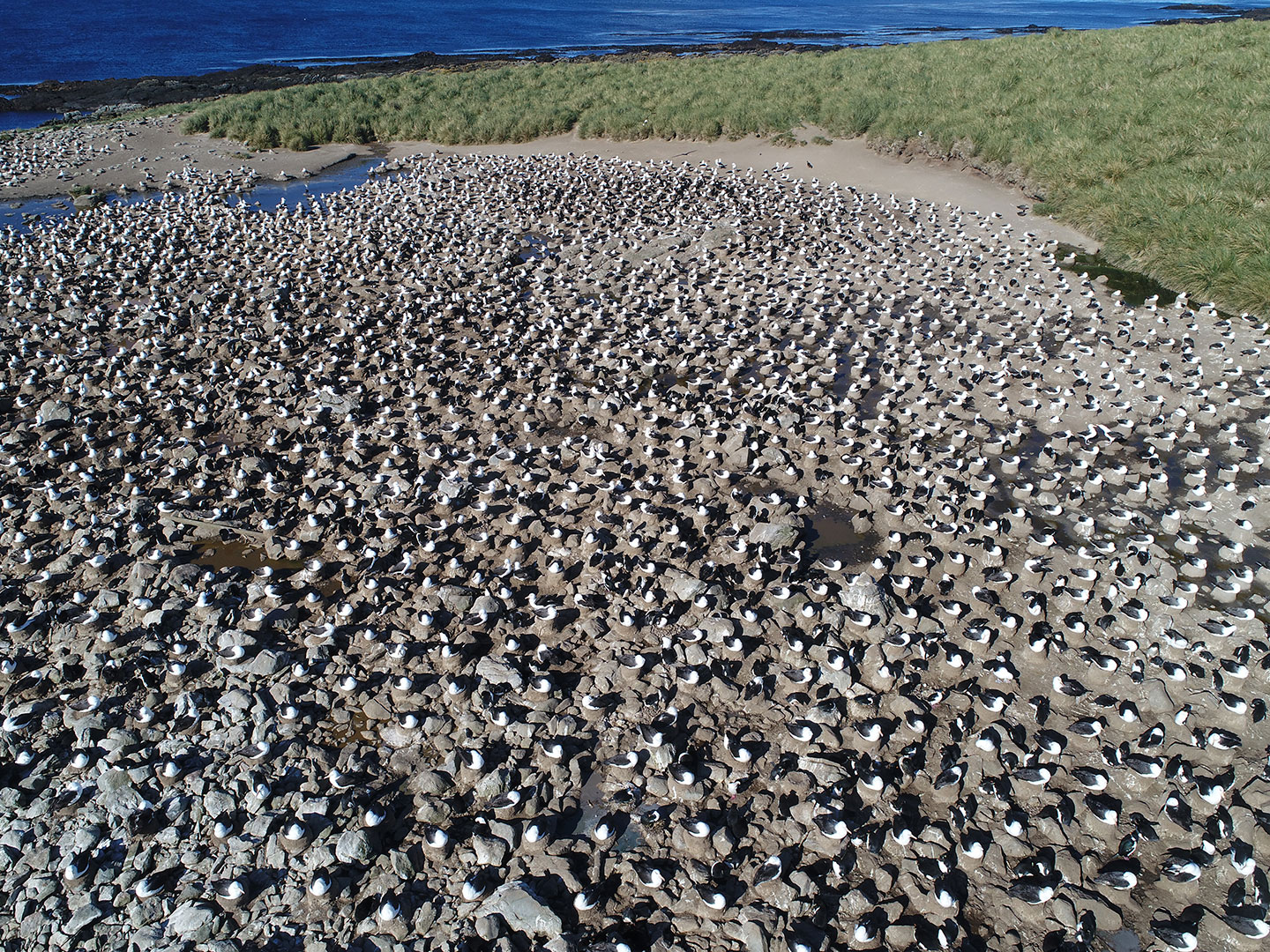
Protecting rhinos and more
Serge Wich doesn’t have to build his own drones anymore. But he’s still tinkering. Wich and colleagues Carl Chalmers, Paul Fergus and Steven Longmore are building AI that automatically detects many types of animals. Chalmers and Fergus are computer scientists. Longmore is an astrophysicist. They all work at Liverpool John Moores University. They call their project Conservation AI. When someone uploads an image or video, the model analyzes the data. Then the model identifies anything it can. So far, it recognizes lions, elephants, rhinos, zebras, people, cars and much more.
To add a new species or object to this list, the Conservation AI team must follow the same process as Hayes. They must go through thousands of images, manually drawing and labeling rectangles.
Researchers can use this model to locate or count animals. Wich hopes someday people will also use it to protect animals from illegal hunting, known as poaching. Many wildlife preserves already use drones and camera traps to watch over protected species. But typically a ranger has to keep an eye on the camera feed. In the future, an AI model could keep watch instead. It could send automatic alerts when a drone or camera sees suspicious activity.
The team tested this idea in a study in East Africa, published last year. Students and staff at a field site in Tanzania pretended to be poachers. The researchers flew drones over the pretend poachers at different times of day. Sometimes the actors were walking. Other times they stood still. They might have been hidden under leaves or out in the open. Sometimes the researchers used drones equipped with regular cameras. At other times they had thermal cameras.
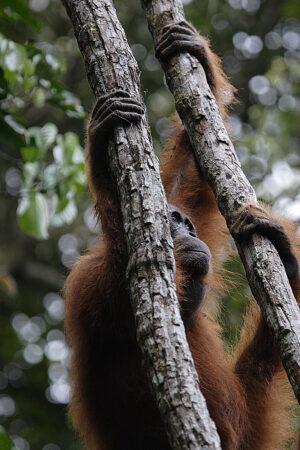
Overall, people looking at the drone images did a better job than the AI model at finding pretend poachers. The model picked out many things (such as shadows and rocks) that weren’t people at all. Yet the model also found poachers that most people missed. “We’re certainly pleased with the results,” says Wich. With a little more work, he thinks that systems like this will make it easier for rangers to better protect endangered animals.
Yet, he cautions, this technology won’t end poaching. The real solution is to make it impossible to sell endangered-animal parts or to make sure the people who want to sell them instead find other options for work.
In addition, he points out that many endangered species live in remote areas. Here, internet connections may be spotty or nonexistent. That matters because people must upload images and video via the internet to use Conservation AI.
There’s another problem, too. In low-income parts of the world, conservationists may not be able to afford the equipment needed to study and protect species. Drones help make this work a bit less costly. Rogan’s team recently published a paper describing exactly how to use drones to study whales. In the near future, these researchers hope that the resources and technology to do conservation work will become widely available anywhere in the world.
“Tech,” Wich says, “needs to be accessible for everyone.”
